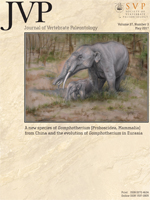Renewed research at the early Miocene fossil site of Bukwa in northeastern Uganda has resulted in new fossil finds, including fish, with representatives of two families, Cichlidae and Alestidae. Although the two families were previously briefly reported from Bukwa, we here give a more detailed account of the fishes based on newly collected material. The cichlid material, mainly composed of vertebrae, can be tentatively assigned to one or more species of Pseudocrenilabrinae. The alestid material, comprising a diversity of teeth, likely represents several different species of Alestes, Brycinus, and/or Bryconaethiops. Although the ichthyofaunal diversity of Bukwa is low, the fishes are important for indicating the paleoenvironment and hydrographic connections of Bukwa. The early Miocene was a critical time for African faunas, because it was during this time that the Afro-Arabian and Eurasian plates came into contact with one another, ending the long isolation of Africa, which, along with rifting in East Africa, created new terrestrial and hydrological connections allowing faunal interchanges. Bukwa is one of only a few African early Miocene localities known that sample fish and, based on these fish, the site probably represents an area of interconnected lakes and large rivers, including floodplains.
How to translate text using browser tools
1 May 2017
The Fishes of Bukwa, Uganda, a Lower Miocene (Burdigalian) Locality of East Africa
Alison M. Murray,
Thodoris Argyriou,
Susanne Cote,
Laura Maclatchy
ACCESS THE FULL ARTICLE

Journal of Vertebrate Paleontology
Vol. 37 • No. 3
May 2017
Vol. 37 • No. 3
May 2017




